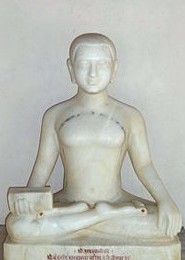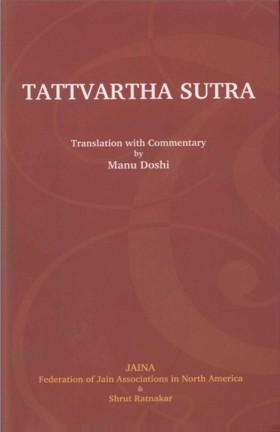10.02 Bandhhetvabhāvnirjarābhyām
Audio: Sanskrit: बंधहेत्वभावनिर्जराभ्याम्।
Hindi: बंध हेतुओं के अभाव और निर्जरा से कर्म का आत्यंतिक क्षय होता है।
10.03 Krsnakarmakshayo Mokshati
Audio: Sanskrit: बंधहेत्वभावनिर्जराभ्याम्।
Hindi: बंध हेतुओं के अभाव और निर्जरा से कर्म का आत्यंतिक क्षय होता है।
English: Karmas are destroyed by eliminating the causes of bondage and by eradication. Total destruction of all the Karmas is liberation..
The spiritual pursuit consists of the endeavor to get rid of the four defiling Karmas. For that purpose one has first to destroy the deluding Karma. The remaining three can be destroyed thereafter. For getting rid of them it is necessary to prevent the acquisition of new Karma and to eradicate the bondage of the old ones. The former is Samvar and the latter is Nirjarā. Thus for the state of Kaivalya one has not to look outside. He has simply to be free from the bondage of defiling Karmas and experience his own undefiled state. As a soul becomes free from the defiling Karmas, it attains the state of Kaivalya. That is the state of omniscience.
After attaining that state, there may or may not remain the impact of non-defiling Karmas. In the latter case the soul attains instant liberation. In the former case the impact of non-defiling Karmas is going to last during the remaining span of life. At the end of that life they would be stripped off and the soul attains the Karmaless state. The state of Kaivalya is thus a precursor to the attainment of liberation. At that stage there is total absence of the factors, which can lead to Karma. There is no scope for acquiring new Karma. Hence it is the state of liberation. Sutra 3 therefore states that total destruction of all Karmas is liberation.
 Acharya Umaswati
Acharya Umaswati
